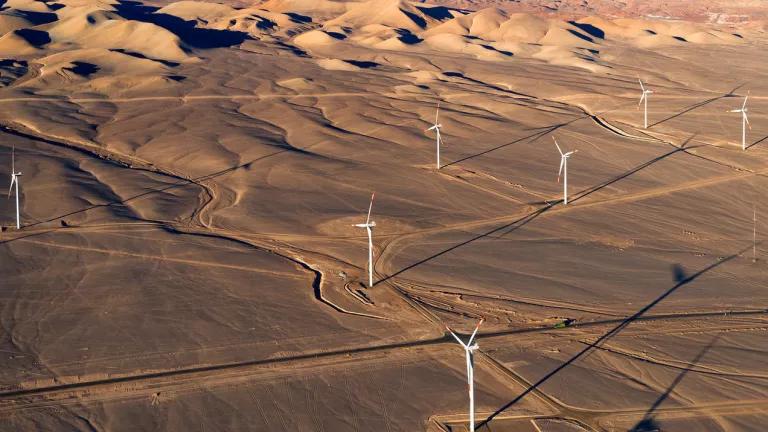Ten Environmental Stories to Mark a Decade in Latin America
The Latin America team at NRDC reflects on the incredible environmental milestones we've witnessed in our work, and beyond.
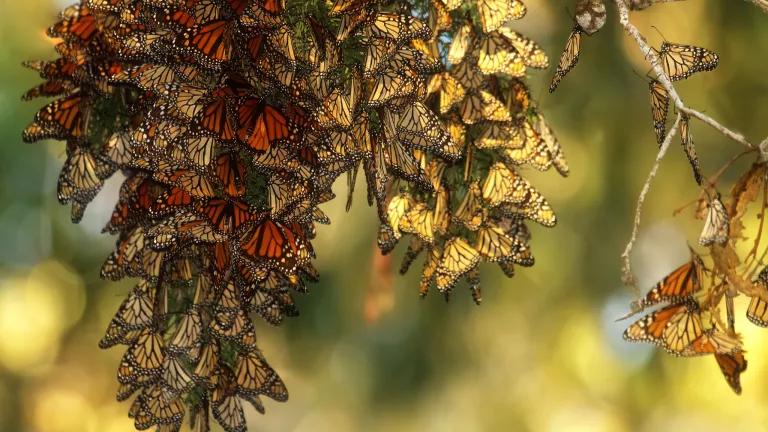
Monarchs in Mexico
Andrea Becerra, of NRDC’s Latin America Project team, contributed to this post.
As we prepare to head into 2020, the Latin America team at NRDC couldn’t help but reflect on the incredible environmental developments and milestones we saw in our work and beyond over the past decade. There have been inspiring highs, devastating lows, and complex challenges every year. As a small token of gratitude to all of the groups, communities, and individuals throughout Latin America who do such amazing work everyday to protect people and the planet, we created the list below of ten environmental issues that marked the past ten years in the region.
1. A great migration
In 2019, the yearly count of the eastern population of North American monarch butterflies that overwinter in Mexico’s Monarch Butterfly Biosphere Reserve increased dramatically. The monarch population in the reserve spanned 6.05 hectares of oyamel forests, the largest in over 10 years. Despite this welcome news, the monarch population has seen a dramatic fall in the past twenty years due to the extensive use of glyphosate in the agricultural fields of the U.S. Midwest. Maintaining the monarch population will require increasing the availability of milkweed—the monarch larva’s primary source food—along the butterfly’s migratory pathway and reducing our dependence on agricultural pesticides.
2. David vs Goliath
Tucked into the southeast tip of the Baja California Peninsula, Cabo Pulmo National Park in Mexico is one of the world’s great marine conservation successes and a prime example of the critical role of community-based conservation. After years of unsustainable fishing practices degraded the park’s rich coral reef ecosystem, the tiny community of Cabo Pulmo joined scientists, civil society and the government in creating the protected area—today one of the planet’s most robust marine reserves. When the Cabo Cortés mega tourism and coastal development project threatened the park and local freshwater source, the community again joined scientists and NGOs, including NRDC, to defend the park. Cabo Cortés was rejected in 2012 (and again in 2015) and the local coalition Cabo Pulmo Vivo has continued to work to protect the region’s natural treasures and ensure more sustainable economic opportunities.
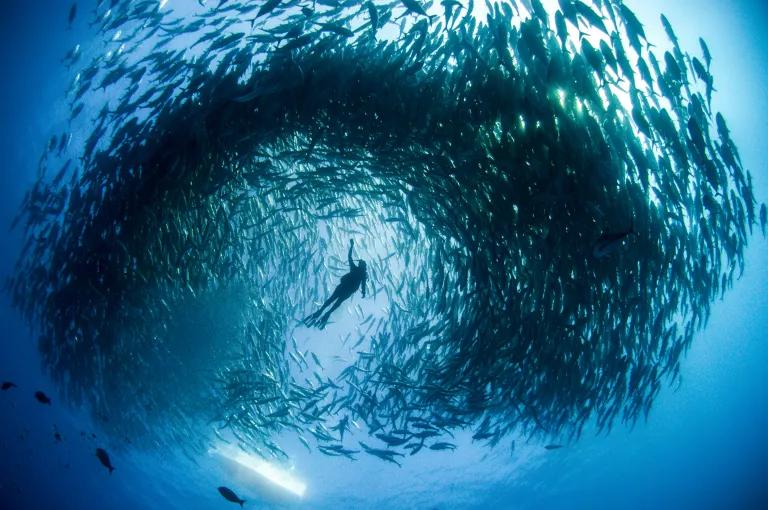
Cabo Pulmo National Marine Park
3. Renewables on the rise
The past decade has seen an energy revolution in Latin America, with many countries turning away from their historic reliance on oil, gas and large hydroelectric dams, and towards clean, sustainable energy generation from non-conventional renewables. In fact, the region’s renewable energy resources have the potential to meet 22 times the projected 2050 electricity needs of all of Latin America and the Caribbean. Key countries—Mexico, Brazil, Chile, and Uruguay—have led the way, gaining international recognition for record-setting low prices and national ambitions. Most recently, Chile, Colombia, Costa Rica, Dominican Republic, Ecuador, Guatemala, Haiti, Honduras, Paraguay and Peru officially declared their commitment to a collective regional objective of 70 percent of renewable energy by 2030. And Chile, Costa Rica, and Honduras have laid out routes to full decarbonization.
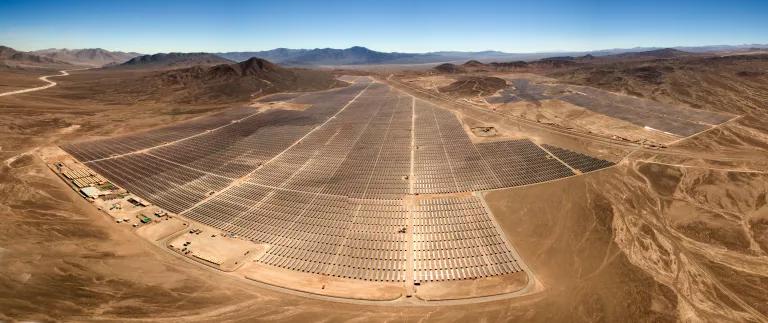
4. The rivers won
Chile’s Patagonia is one of the last, vast rugged expanses left on the planet. It is a region of lush fjords and islands, dense rainforests, snow-capped glaciers, powerful wild rivers, and a rich traditional culture. But the iconic region has repeatedly been threatened by extractive industries looking to exploit its remarkable natural resources. In 2008, the HidroAysén company proposed building five mega-dams on two of Patagonia’s biggest rivers. NRDC joined a coalition of Chilean and international groups to stop the dam project. We succeeded in 2014, when the government cancelled HidroAysén. The seven-year campaign to stop the dams, “Patagonia Sin Represas,” inspired national protests, became the largest environmental issue in the country’s history, and inspired Chileans throughout the country to stand up to threats to their environment.
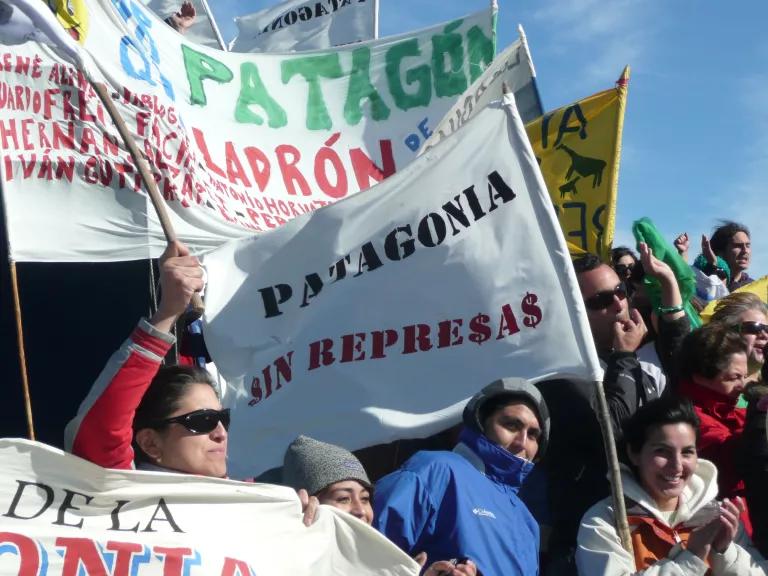
A group of protesters holding up banners, including one reading ‘Patagonia sin Represas’ (‘Patagonia without dams’) in Chile.
5. Transportation innovation
Known among transport enthusiasts as the home of the Bus Rapid Transit system, several Latin American leaders have stepped up efforts to clean up the air in their cities. And with good reason. Transportation is responsible for over one third of the region’s CO2 emissions and poor air quality that affects the health of thousands of people every year. Latin America is the most urbanized region in the world, with over 80 percent of people living in cities now, and it has the fastest growing car fleet in the world. The mayors of Buenos Aires, Mexico City, Rio de Janeiro, and Santiago are among the 50 mayors worldwide who have pledged to reach net zero emissions by 2050. Medellin, Mexico City, Quito, and Santiago have signed on to the C40’s Clean and Healthy Streets Initiative, pledging to only procure zero-emission buses from 2025. Electromobility is also a major focus among cities in Chile, Costa Rica, Colombia, and Mexico. Notably, in 2018 Chile’s electric bus fleet became the second largest in the world after China.
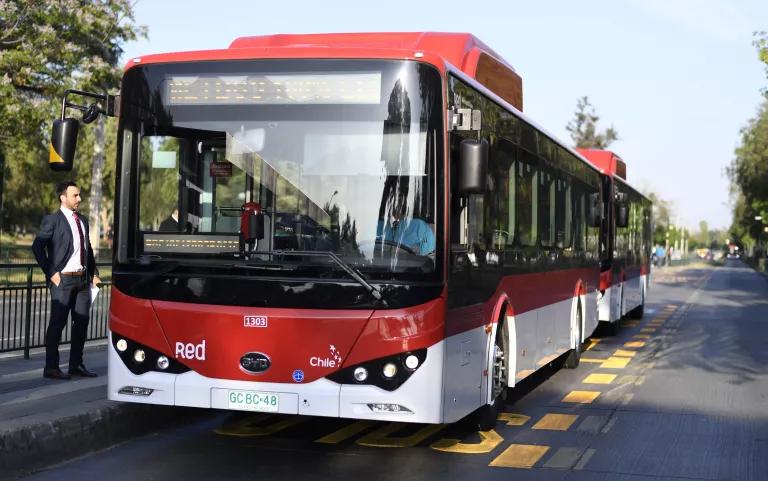
Electric bus, Santiago, Chile
6. The driest decade
Chile has experienced the driest decade in its recorded history. Depleted aquifers are being pumped dry while the country’s rich glacial reserves are increasingly threatened by rising temperatures associated with climate change and human activity, including mining. Scientists predict that by 2070, the glacier-fed Maipo basin, which supplies 80 percent of Chile’s capital region with potable water, will experience a 40 percent reduction in water flow due to loss of precipitation and glacial retreat. Scarcity has disproportionately impacted small farmers and low-income communities. Recent social unrest sparked by inequities that the government has failed to sufficiently address has also shed light on environmental injustice—leading many environmental groups to chant the “climate crisis” is also a “social crisis.” The situation in Chile parallels the rest of Latin American, a region that has abundant sources of freshwater yet struggles with crippling water shortages. The following decade will be vital for Latin America to secure its water resources in a sustainable and equitable manner.
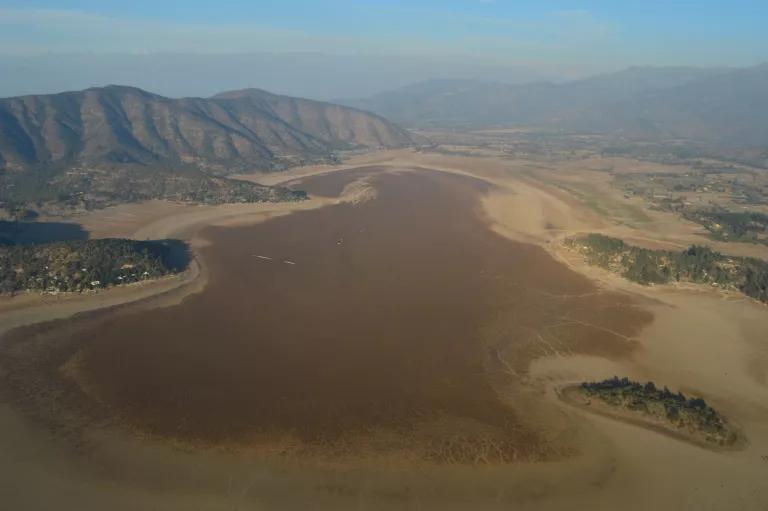
The etchings of a lake can be traced on the large, dry stretch of land, where less than five years ago the expansive Aculeo lake drew tourists escaping the busy metropolis to camp and swim in the clear water.
7. Protecting the ocean from plastics
In 2018, a UN Environment study reported on the approximately 13 million tons of plastic that are dumped into the world’s oceans every year, numbers which are expected to double without drastic change. With 16 million square kilometers of oceans and the source 24 percent of the world’s fisheries, Latin American and Caribbean countries cannot afford inaction; many have taken important initiatives. Antigua and Barbuda, Argentina, Bahamas, Barbados, Belize, Brazil, Chile, Colombia, Costa Rica, the Dominican Republic, Ecuador, Granada, Guyana, Honduras, Mexico, Panama, Peru, Saint Lucia and Uruguay have all raised awareness and designed policies to reduce plastic pollution such as banning plastic bags, reducing the use of straws, and/or engaging in campaigns to clean up beaches. However, more remains to be done in the region including officially protecting important marine habitats and species and learning more about Latin America’s oceans.
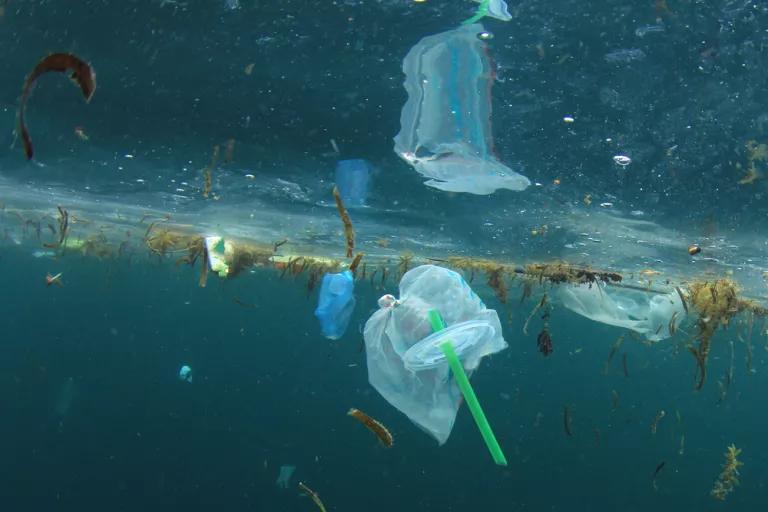
8. Battered islands
Hurricane Maria made landfall near Yabucoa, Puerto Rico around 6:15am on September 20, 2017. In about 12 hours, it wiped out the electrical system of the entire island. The storm illustrated the increasing severity of tropical storms in Central America and the Caribbean due to global warming. Although tragic, Hurricane Maria offered the opportunity for people to develop and implement innovative electricity and infrastructure solutions. To that end, NRDC has partnered with local groups, like Resilient Power Puerto Rico, to establish replicable renewable microgrids that help mitigate carbon emissions and improve the resiliency of energy infrastructure. Much work remains to be done, hopefully in the end, Puerto Rico will have stronger and more resilient critical infrastructure.
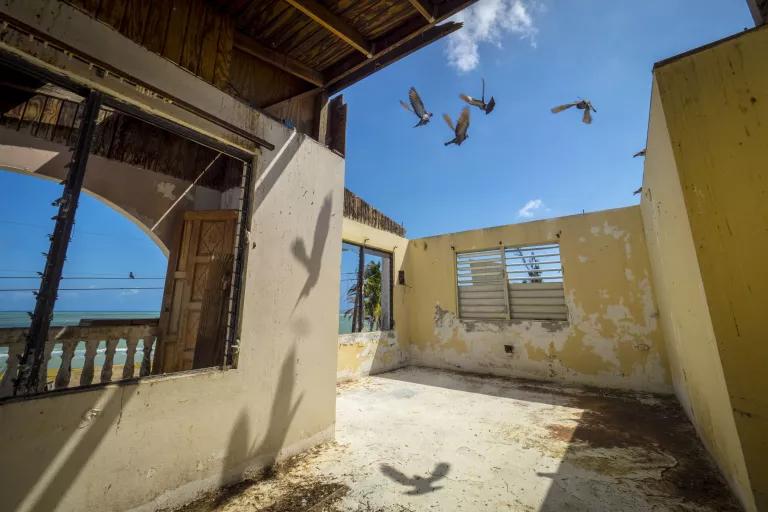
Birds fly over a home in the coastal town of Loiza, Puerto Rico, its roof stripped off by Hurricane Maria.
9. A forest on fire
In August 2019, a large increase in Amazonian forest fires (particularly in Brazil and Bolivia), some of which are periodically set to clear land for soy and cattle farming, grabbed international attention. The rise in forest fires has been labeled the “Bolsonaro effect,” referencing Brazilian president Jair Bolsonaro’s notoriously anti-environmental rhetoric that heavily supports increased development over preservation of the forest. This tragic policy has implications not only for the Indigenous and other local communities in the Amazon, but also for the world, as the rainforest plays a critical role in regulating the climate. Now more than ever, with repressive, environmentally irresponsible regimes such as Bolsonaro’s and the impending threat of climate change, representation, solidarity, and action matter.
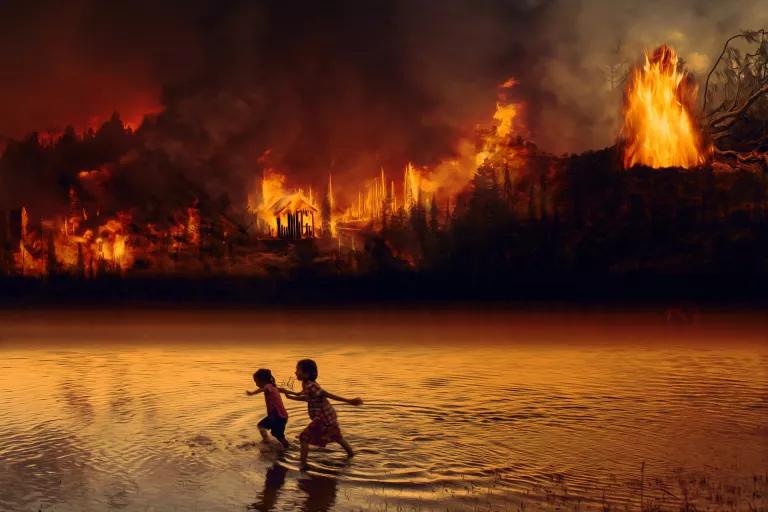
10. A last chance for the Vaquita Marina
The most endangered marine mammal on the planet, the Vaquita Marina porpoise, was spotted swimming with calves in November—a sign of hope for conservationists, Mexico’s northern Gulf of California, and for our planet. But this momentary optimism is stifled by the fact that Vaquita Marina numbers have dwindled rapidly over the last decade, from 567 in 1997 to around just 10 in 2018. Their decline is largely attributed to illegal gillnet fishing that entangles and drowns the pint-sized porpoise. The vaquitas have become a by-catch of the illegal totoaba fishing industry, which is fueled by the high cost of their bladders in China and elsewhere. Their dire situation has gained international attention and is an urgent illustration of both the complexities of global trade as well as what can happen when governments fail to take meaningful action. It is critical to promote initiatives that protect the vaquita and eliminate the use of gillnets to give the world’s tiniest porpoise a chance at survival.
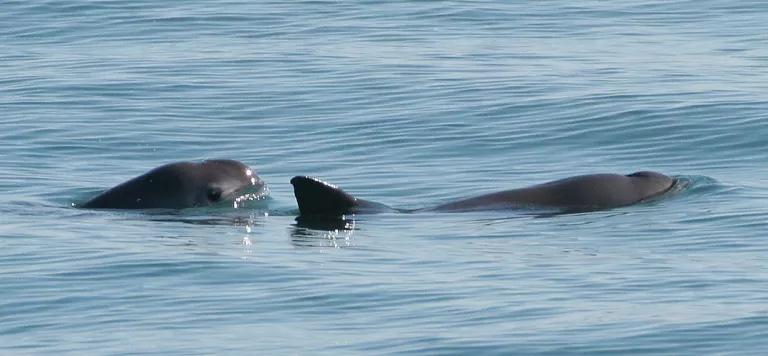
The elusive Vaquita Marina coming up for air.




